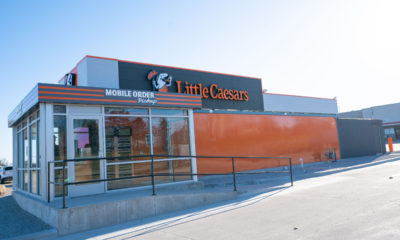It all started so positively. In 1998, Brad Martin and Philip Miller announced that Proffitt's, the fast-growing chain of Southern and Midwestern department stores, was buying Saks Fifth Avenue, the quintessentially urban luxury retailer, from the Bahrainians.
Martin, the ultra-aggressive ex-Tennessee Congressman, had turned five stores into a 230-store chain that was retail's most vigorous venture.
Miller, the ultra-sophisticated urbanite, had moved up the ladder at Marshall Field's and Neiman Marcus to the pinnacle as chairman and ceo of Saks Fifth Avenue, the nation's ultimate retail luxury brand. (Saks had the New York cachet that Neiman's lacked.)
Not everyone felt the synergy. The New York Times made a crack comparing Martin's and Miller's shoes – Martin's practical brogans were the shoes of a Tennessee schoolteacher compared to Miller's shiny Gucci wing-tips. (Ironic, since 100 years earlier The Times itself had been purchased by a Tennessee rustic who turned it into the nation's most sophisticated newspaper.)
It was a pricey buy. Proffitt's was paying $2.82 billion in stock and assumed debt, about 11 times Saks' estimated annual cash flow. By contrast, it had paid just 6 times cash flow for McRae's and a 9.4 multiple for Carson Pirie Scott.
Advertisement
And there were other potential pitfalls. Proffitt's succeeded by applying across-the-board financial and operational models, such as buying store fixtures, graphics and design materials less expensively in bulk. But Saks was a different animal, used to a more lavish budget and a keener design sense.
Martin immediately reinforced his commitment by renaming the organization Saks Inc., acknowledging that the jewel in the crown ought to define the crown. However, despite everyone's protests that it would be business as usual at Saks Fifth Avenue, cracks began to appear in the façade. The buying function was indeed centralized so that the same people were purchasing the same shelving units and T-stands for Saks Fifth Avenue that they were for Herberger's. Saks Fifth Avenue merchandisers began to complain that showcases lacked both the design panache and the polished and durable surfaces they once were known for.
A year later, Miller was out and Christina Johnson was in. By that time, though the 1990s had been the belle epoque for most luxury retailers, Saks Fifth Avenue was not thriving. In 2000, to restore the glitter, Birmingham decided to spin off its New York yankee. Then the spinoff was postponed. It never happened.
The economy dithered in the new millennium and the regional chain formula stuttered. Caught somewhere between Target's cheap chic and Kohl's stripped-down environment, trapped in underperforming malls, the Saks Department Store Group faltered.
The once-dynamic parent organization is now selling off holdings as fast as it can. And it has become ensnared in a Kafkaesque spiral of internal misdeeds leading to investigations that postpone its SEC filings that cause noteholders to cry “default” that make many worry about its viability.
Saks Fifth Avenue is under new management, and trying hard to regain the luster that Neiman Marcus now seems to own. As for that promise that burned in 1998 and is flickering seven years later – could it have been the shoes?
Advertisement

 Headlines1 week ago
Headlines1 week ago
 Headlines1 week ago
Headlines1 week ago
 Headlines1 week ago
Headlines1 week ago
 Designer Dozen2 weeks ago
Designer Dozen2 weeks ago
 Headlines5 days ago
Headlines5 days ago
 Headlines2 weeks ago
Headlines2 weeks ago
 Designer Dozen6 days ago
Designer Dozen6 days ago














